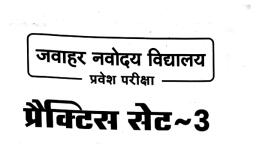Question 1 :
Which type of wave is produced in the stem of tuning fork?
Question 2 :
In density distance curve, the regions represented by the upper portions of the curve when particles are crowded together are :<br/>
Question 3 :
<span>Two tuning forks A, B vibrate with frequencies in the ratio 2 : 7 and their wavelengths in the ratio 3 : 4 respectively. </span>The wave producing greater wavelength is :
Question 7 :
During propagation of longitudianl wave, if at any time, there is compresion at a point, after how much time there will be rarefraction ?
Question 8 :
W<span>hat conclusion can be obtained from the observation that when the prongs of a sound making tuning fork touch the surface of water in a beaker, the water gets splashed?</span>
Question 9 :
Tuning fork $A$ of frequency $305 Hz$ produces $5 {beats}/{s}$ with another tuning fork $B$. After filing tuning fork $B$, it produces $3 {beats}/{s}$ with $A$. The frequency of $B$ before filing was:
Question 11 :
A material medium is not necessary for the propagation of sound. State true or false.
Question 12 :
When we hit a thin plastic ruler firmly on a bench:
Question 15 :
<div><span>Fill in the blank.</span></div><div><span>In longitudinal waves, the particles vibrate in _______ direction of propagation</span><span>.</span><br/></div>
Question 16 :
What happens when you strike a metal plate with a metal stick?
Question 17 :
In which medium , the transmission of sound is not possible ?
Question 18 :
Assertion: A tuning fork is made of an alloy of steel, nickel and chromium.
Reason: The alloy of steel, nickel and chromium is called elinvar.
Question 19 :
A resonance occurs with a tuning fork and an air column of size $ 12 \mathrm{cm} . $ The next higher resonance occurs with an air column of $ 38 \mathrm{cm} . $ What is the frequency of the tuning fork? Assume that the speed of sound is $ 312 \mathrm{m} / \mathrm{s} $.
Question 20 :
The frequency of a fork is $200$ Hz. The distance through which sound travels by the time the fork make $16$ vibrations is(velocity of sound in air is $340$ m/s).
Question 21 :
An electrically maintained tuning fork vibrates with constant frequency and constant amplitude. If the temperature of the surrounding air increases but pressure remains constant, the sound produced will have .........























































